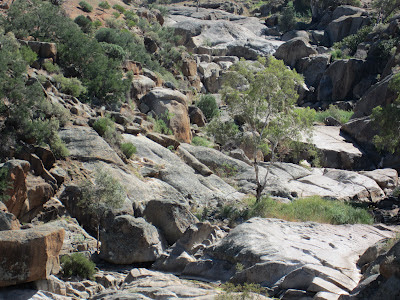Email contact
Sydney: S: 34º 0' E: 151º 0'
Drawing cross-section are dead! Are they?
The Spatialworlds blog has spent a lot of time advocating the use of spatial technology in the classroom and in particular the need to
embrace GIS as part of teaching and learning in the geography classroom. However
this posting explores the possibility that there could be a downside of all-pervasive presence and omnipresent use of spatial technology in our society. Such a proposition is highly relevant to the
use of spatial technology in the classroom. The proposition is that the very
technology which has popularised and democratised geography in the community
may very well be deskilling the population geographically. No longer does one
have to read a map or street directory; just use your GPS or Google Map to get there
or find a place. Could this be deskilling the population to the extent that
people will no longer understand or know how to read a map. Is this a problem?
Many of us drive a car and have no idea how the engine works, play a CD and
have no idea how the music is created etc etc.
However some would argue that in schools students should have
an understanding of how ‘maps work’ and not just use them. They go on to
argue that students, to really have spatial understanding, need to know, for example,
how a cross section is constructed and how to read a grid reference and that these are
necessary spatial literacy skills for a student. So what some say is busy
geography lessons; drawing maps by hand, constructing cross sections and
plotting reference points may still have a place in a geography class despite the
plethora of just a ‘click away’ spatial technology so readily available for the
classroom these days.
A recent blog posting by a GPS marketing firm affirmed what I
had been thinking on the matter. The posting
asked us "not to eliminate older technologies in our haste to embrace the shiny and new". The posting is naturally pro-technology but suggests that we must keep "an assortment of paper maps readily available" in case the "tracking systems down, natural or terrorist events occur, Sun Spot activities interfere with the satellites, nuclear explosion, civil unrest or roadworks requiring a detour (GPS does not know about that)" - yes, we get the idea; technology is not fool proof but any fool should be able to read a map to get to safety.
"Technology is great but it should never be a replacement for skills but a tool used to assist you."
Schools should use spatial technology so that students are aware of the power, functionality and applications of the technology. With caution I am also arguing that students should have the capacity to use maps in a practical sense to have an understanding of the underlying basics of maps so that they can use the technology judiciously and even be able to survive without the technology if the need arises. Both are basic spatial citizenship skills. We must be careful "not to throw the baby out with the bath water!"
Postscript: Ironically a week after this posting, Apple released IPhone 5 with the subsequent controversy related to the new Apple Maps. Apple had replaced Google Maps on the IPhone with their new Apple Maps. That is an interesting industrial story in itself but what was really interesting is that these new maps were found to have significant problems with accuracy and representation. Apple quickly withdrew the new maps with the damage not only done to the IPhone but also to public trust in the accuracy of spatial technology. Maybe this was a good thing! Maybe the public will realise that they should always have some spatial literacy skills and understanding of geography as they use these wonderful technology tools.




